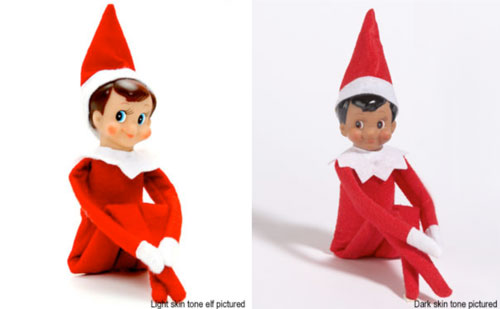Over at my Undisicplined site, I’m working on my intellectual history, from 1996-present. For the past week, I’ve been mulling over a question that has haunted me ever since I came across my Senior Thesis evaluation (1996) and my advisor’s opening lines: “This was, without a doubt, a very strong thesis. Indeed, we could not remember one in our experience that was stronger.” The question is: Am I living up to the promise that I showed in my undergraduate senior thesis?
The process of thinking through this question and detailing my experiences as an academic since writing this thesis, have been tremendously helpful in enabling me to keep pushing at my questions, conflicts and uncertainties over my current (liminal?) state as beside/outside of the Academy. Just a few minutes ago, I posted the entire essay (almost 3000 words!) on Undisciplined. I thought I’d post an excerpt describing four critical/creative projects that I completed in order to resist/disrupt/intervene in the damaging effects of my training and practice as an academic.
Intervention One
To counter the effects of this academic training, I decided to create a project that would enable me to take many of the theories about storytelling, women’s agency, identity, selfhood, memory and home and experiment with them in a different medium. Instead of writing an esoteric academic paper, I, along with my husband Scott Anderson, created a digital video about my family’s most treasured homespace, the Puotinen family farm in the Upper Peninsula of Michigan. The themes that I had been studying for years (like the tension between wanting to belong and needing to critique simplistic notions of belonging) served as the foundation for our project.
After completing and screening the first video, The Farm: An Autobiography, in 2001, we created another one the next summer, The Puotinen Women. This video, which was a continuation of themes and questions raised in the first one, also focused on the contradictory roles that women played in Finnish immigrant households and was heavily shaped by the miscarriage I suffered just before we started filming.
These two digital videos enabled me to experiment with communicating my ever-increasing feminist theoretical knowledge to audiences outside of academic spaces. And, they allowed me to use these theories to make sense of my relationship to the farm and generations of Puotinens. These videos reminded me that theories weren’t just abstract ideas and academic knowledge wasn’t just academic! They could help me understand and connect with my family and heritage.
Due to the success of those digital videos, I briefly considered shifting the focus of my dissertation so as to include them. But I didn’t. I can’t remember the thought process that went into that decision, but I imagine that I was reluctant to subject my highly personal work to the rigid (and often stultifying) demands of academic scholarship.
Intervention Two
When I was nearly finished with my dissertation, over two years after I started writing it, my mom got sick. Really, really sick. She was dying from stage 4 pancreatic cancer. I was working on my fourth chapter, “Working to Become Allies, Working for Alliances,” and reflecting on Judith Butler’s difficult questions, What is the livable life?, and Who gets to achieve it? I wrote a big chunk of that final section in the hospital on the day of my mom’s whipple surgery. If the surgery was successful, she might have six months to a year to live. If not, she would most likely be dead in a few weeks. The surgery was a success and, with the help (?) of chemo, she beat the odds and lived for almost 4 years.
When I look back at this chapter, and reread my section on livable life, I don’t see any evidence of the pain and fear that I was experiencing on that day. No footnote referencing my own powerful connection to the concept, serving as an intervention into the “academics as usual” prose. But, I know that Butler’s theories about the livable life, and my critical engagements with it on that day, and the days to come, was crucial in enabling me to survive that horrific month when my world shattered.
Intervention Three
I can’t remember when the idea first hit me, but in the spring of 2009, I decided to create and write in my own blog. I had been using blogs in my classes since 2007, but I had yet to experiment on one with my own theories and research. I decided to use my blog as a space for documenting and archiving all of my ideas and theories about the value of troublemaking and troublestaying. These ideas had been fermenting for over 10 years, almost since the beginning of graduate school, but I had never had time to write about them. And I didn’t make the time because these ideas—about The Brady Bunch and Jurgen Habermas; Michel Foucault and Dr. Seuss’ Horton Hears a Who; Eminem, Borat and Socrates; or Judith Butler and Hannah Montana, didn’t seem as “serious” or “important” as my work in feminist theory and ethics.
From the minute I started writing on the blog, I loved it. I wrote and wrote and wrote. I probably wrote more in that first month on the blog than I had written in the three years prior to starting it. And I was having fun. Finally, I was taking all of these theories that I had been learning since 1995 and not only applying them, but infusing them with my own perspectives and ideas! I was playfully experimenting with my own writerly voice and working to connect various parts of my life with my academic work. My passion for researching and writing was back!
Intervention Four
Months after my mom died, in 2009, I began writing about grief and loss on my blog. The blog gave me a space for processing my grief and for thinking through how my experiences of being in a sustained period of not-quite-grieving as my mom was unable or refused to die fit or failed to fit with Judith Butler’s theories on the value of grief. When I came across a call for papers on grief, bereavement and motherhood in an academic journal, I decided to submit a critical/creative essay for it about my own experiences with being a mother who recently lost her mother. I used my blog to document and share the process of reflecting and writing on grief and motherhood. My finished essay, Living and Grieving Beside Judith, which was published in the Journal for the Motherhood Initiative allowed me, through the process of writing it, to understand and live with my grief.
I vividly remember how powerful and profound the process of writing that article was. On one day in particular, I recall sitting at the table in my backyard and writing about Judith Butler’s chapter, “Beside Oneself” in relation to a memory of how my sisters and I sat and comforted my mom on her bed the night before her surgery. After writing out this memory, I realized that that moment on the bed had haunted me for some time. I had always remembered (whether it was true or not, I’m not sure) sitting off to the side as my sisters lay next to her. My not sitting beside her symbolized my failure to be there for my mom when she needed me most. In writing myself back onto that bed, next to her, I was forgiving myself.
And, here’s part of my conclusion:
“Living and Grieving Beside Judith,” along with my other academic interventions are, without a doubt, the most important projects related to my academic research that I have completed since starting graduate school. Some days I cannot even remember the title of my dissertation, but I will always remember what I learned and what I was able to communicate through my digital videos about my family’s farm (which has since been sold). I will always reflect gratefully on how I used the final chapter of my dissertation to cope with the uncertainty, fear and sheer devastation that I felt as my mom suddenly became someone with stage 4 cancer. I will always read through my blog with delight, remembering the various theories I’ve encountered over the years and how they connected to my life at the moment in which they were written. And, I will forever cherish the experience, on a hot summer day, of working on my journal article and being able to imagine, through writing, a way to forgive myself for what I believed I should have but didn’t do for my mom as she was dying.




